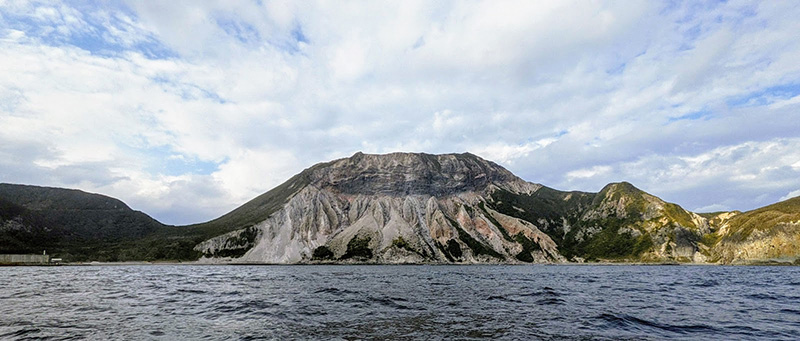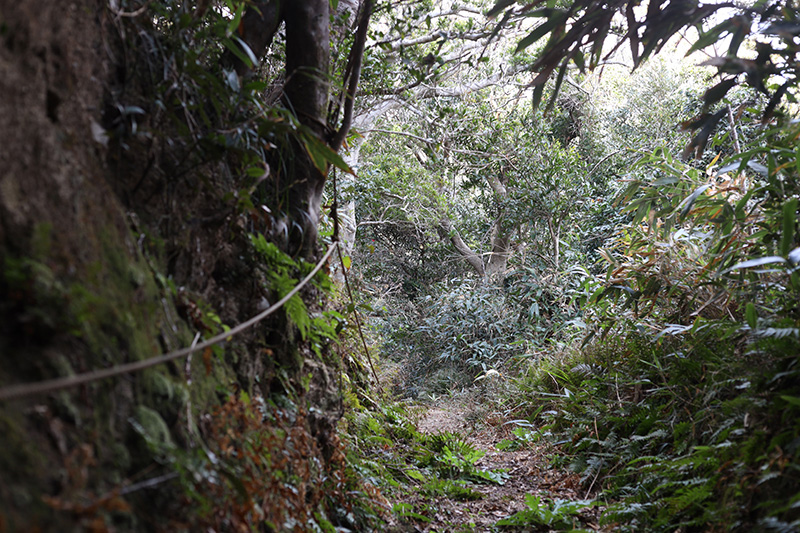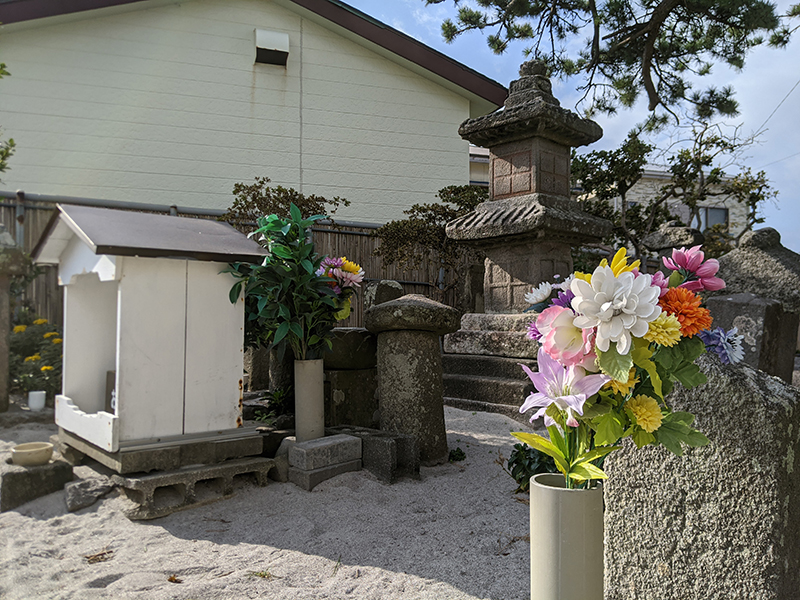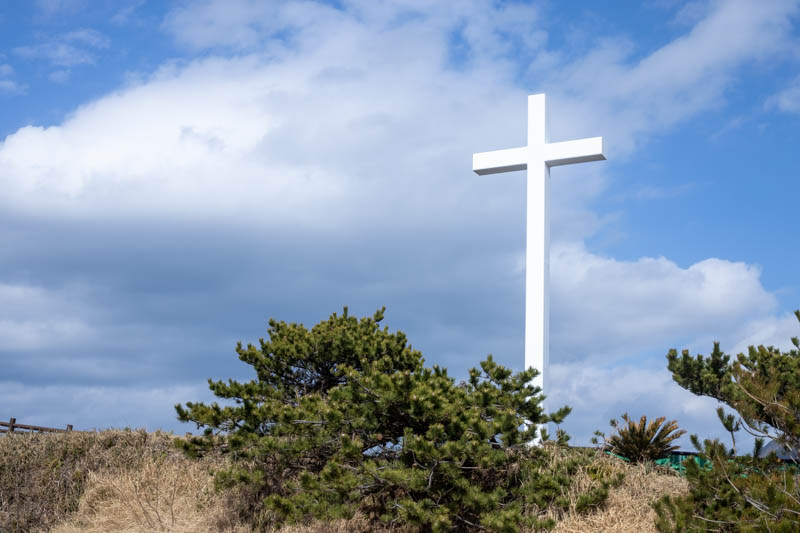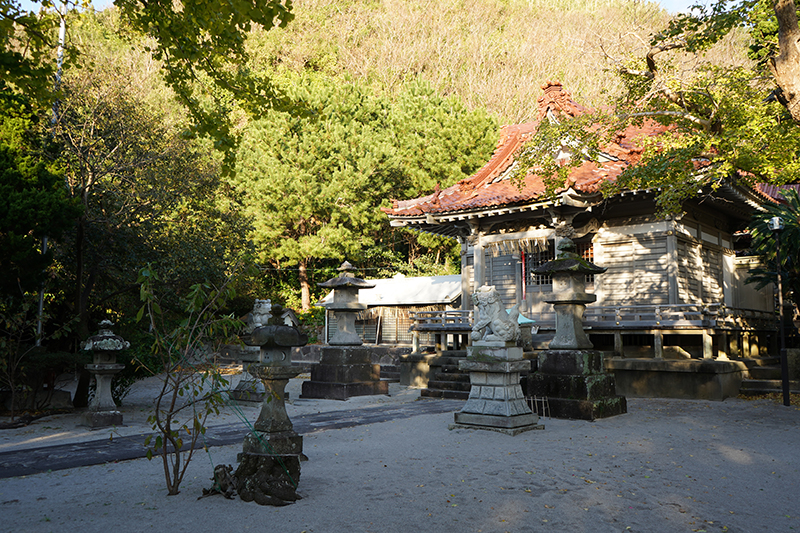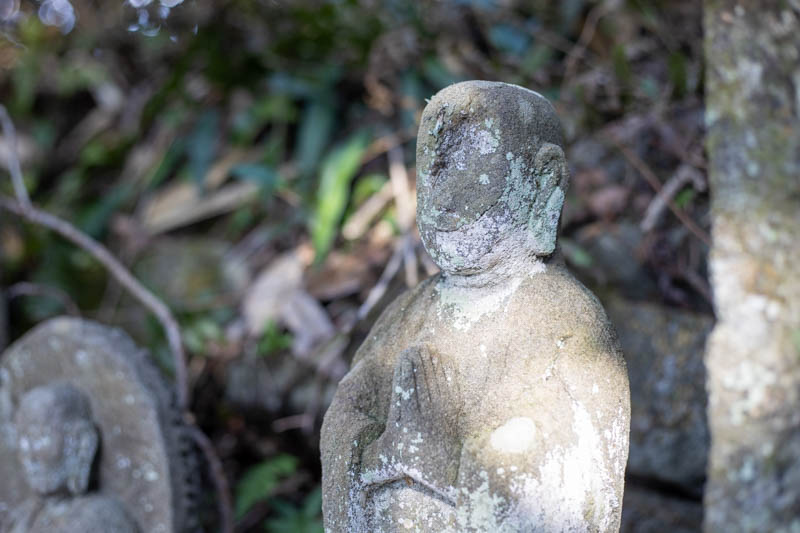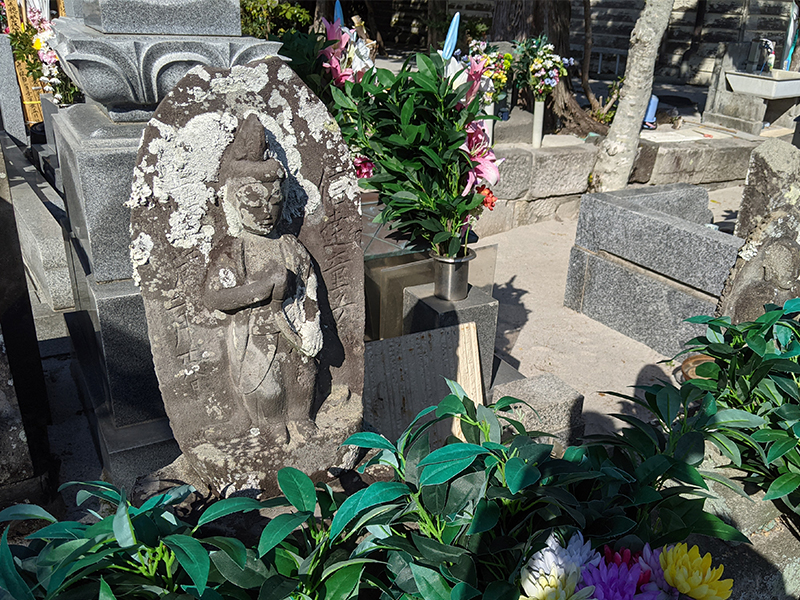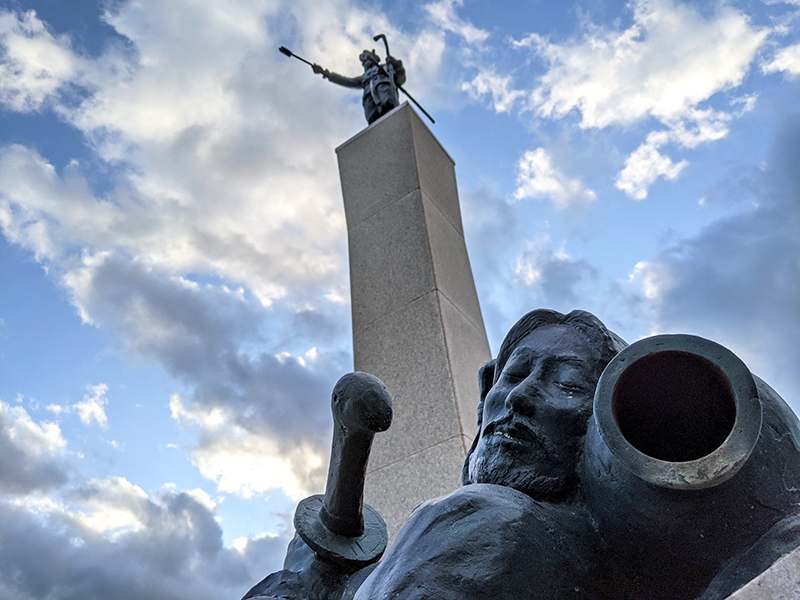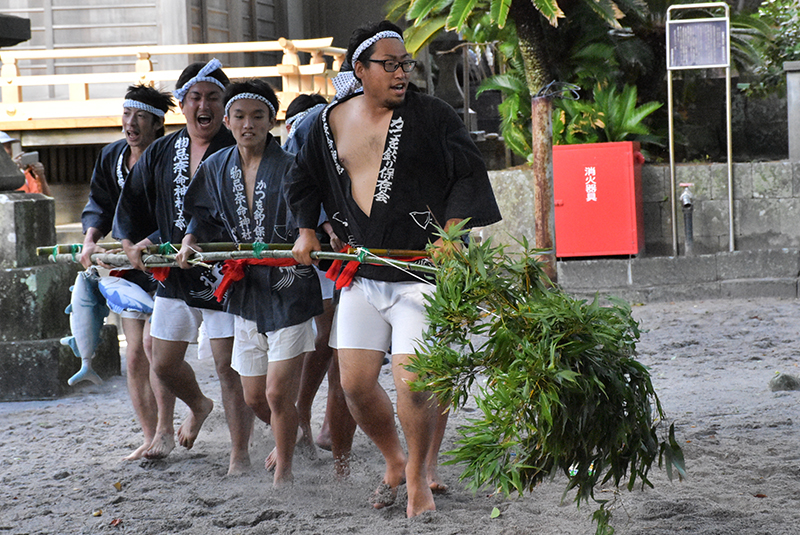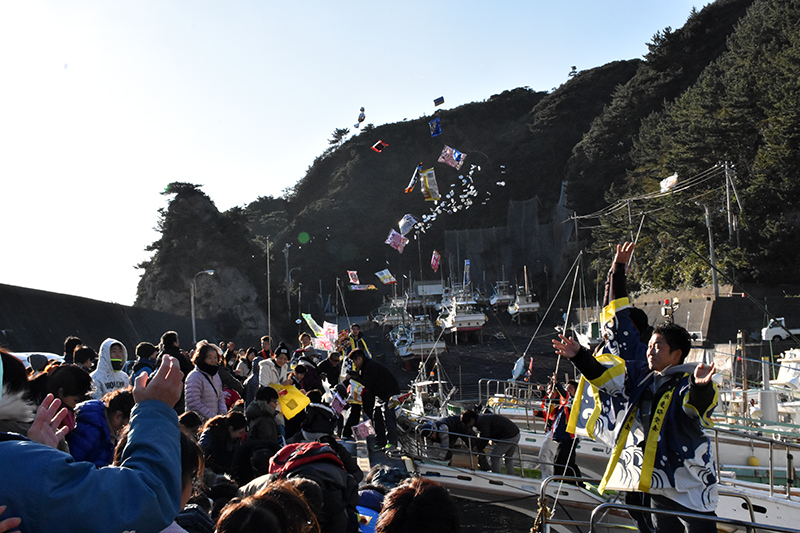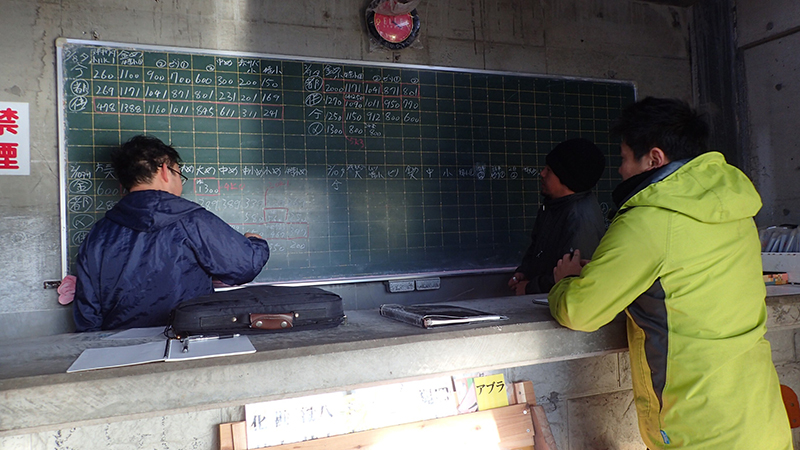Discover
Kozushima has a great deal to offer to a visitor—beautiful seas, winding hiking routes and excellent food—but there is more to it than meets the eye! Kozushima has a fascinating geological makeup and natural environment, not to mention its long history, complex religious traditions and unique culture surrounding the local fishermen. Here you can learn more about Kozushima in order to better enjoy your stay on the island.
Nature
Much like the island’s name suggests, Kozushima is indeed a very “godly” place! From beaches and mountains, to even deserts and glorious starry night skies, Kozushima is home to a wide variety of nature that anyone and everyone can enjoy!
The Island’s Formation and Environment
Part of what makes Kozushima’s environment unique is how it was formed. If you look at Kozushima on a map, you will see that it is a small island situated in the Izu Archipelago to the south of the Izu Peninsula. This island was not originally part of the mainland, and in fact is the result of years of volcanic eruption and pyroclastic flow with the last volcanic activity recorded in the year 838 AD, which is why you will not find any indigenous mammals besides the people themselves and the animals they brought over! Part of the Fuji-Hakone-Izu National Park, Kozushima is six kilometers long and four kilometers wide, and is a comparatively flat island composed of a cluster of 18 lava domes with a rich layer of black obsidian which can be easily seen on some sides of the island’s mountains when viewed from afar.
History
Kozushima’s history, both real and mythological, is deeply tied to water and the “inflow” of new people to the island. To better understand the island and get more out of your stay, join us for a quick tour back in time and into the island’s mythical origins.
Mythical Beginnings
In mythology, the creation of Kozushima is tied to the founding myth of Japan itself. As some of you may know, at the dawn of Japan’s legendary history Amaterasu, the chief goddess of the Japanese pantheon sent her grandson Ninigi-no-mikoto to descend from the Heavens and take control over the terrestrial realm. However, Earth already had its gods, chief among them being Okuninushi. Okuninushi was ultimately persuaded to hand over the rule over the terrestrial realm and the region of Izumo to the Heavenly Deities, and his eldest son Kotoshiro-no-mikoto (also known as Mishima Daimyojin and associated with Mishima Taisha Shrine in Mishima, Shizuoka; he is also identified as Ebisu) led some of his fellow Earthly Deities over to Izu (modern-day Shizuoka Prefecture). There, he met with the god of Mt. Fuji and managed to receive the southeastern part of the Izu Peninsula as his new domain. However, that small plot of land was hardly enough for him and his whole retinue, and so, with assistance from the other gods, he proceeded to create the different islands of the Izu Archipelago, Kozushima being one of them.
However, the most famous legend related to the origins of Kozushima is the Legend of Water Sharing. To learn more about it, see the article about Water on Kozushima.
Religion
Kozushima has a rich spiritual tradition, both in the form of Shinto and Buddhism. Born out of awe and respect for nature, the life-giving but dangerous sea in particular, much of the island’s religious celebration is focused around fishermen and prayers for bountiful catch. Another important aspect of Kozushima’s spirituality is the veneration of the dead.
Life on the Island
Kozushima, surrounded by an azure sea and towered over by Mt. Tenjo, is a natural wonder and a stunning sight to behold. However, historically the life on the island was difficult and marked by hardship which made the islanders into resilient, hard-working folk who strived for the prosperity that the island enjoys today. While Kozushima is surrounded by bountiful seas, it has little in the way of arable land that can be turned into paddies, and the island was often plagued by food shortages. The islanders used all their ingenuity to get whatever food they could, including a dry-land type of rice called okabo and a green plant called ashitaba (lit. “tomorrow leaf”), the latter being a staple of local cuisine to this day. Nonetheless, there were several cases of famine throughout history. In 1735, crop failure resulted in over 200 people starving to death.
Water
If you ask one of the locals, “What is Kozushima’s most important resource?”, one of the most likely answers you might receive is “Water!” While that might strike you as strange, the water on Kozushima is indeed exceptional and it’s no exaggeration to call it nature’s blessing. Let us take a dive (pun intended) into the secrets behind Kozushima’s water and find out what makes it so exceptional.
Water Aplenty
The first thing to note about water on Kozushima is that it can be found in literally every corner of the island. Having so many wellsprings is rather uncommon among the islands of the Izu Archipelago—only Mikurajima can boast similar richness of water. The locals greatly benefit from the easy access to water—all tap water on the island comes from the underground springs, and unlike many other islands of the archipelago, Kozushima doesn’t have to import its water from the outside.
Festivals
Japanese festivals, or omatsuri, are a unique mix of religious celebration, community events, and pure unbridled fun. Kozushima, despite being a small island, has its fair share of festivals, some of them grand events, and others small intimate affairs involving mostly the Shinto clergy. There are two festivals in particular that we strongly recommend you visit if you find yourself on Kozushima when they are held: Katsuomatsuri and Norizome.
Like most religious affairs on the island, the festivals are deeply tied to the fishermen. Back in the day before the fishermen had access to motorboats and all the advanced technology involved in fishing nowadays, fishing was a very risky business that often left the fishermen at the mercy of the sea. There was even a saying “there’s only the boat’s planking between you and perdition” which reflected that harsh reality. However, fishing in general, and bonito fishing in particular, have always been central to Kozushima’s economy (back in the Edo period, Kozushima was allowed to pay some of their taxes in dried bonito instead of rice), so the fishermen had no other choice but to set out and brave the treacherous seas. They felt they were, quite literally, at the gods’ mercy, and treated every safe return as a divine gift. Which is why events like Katsuotsurigyoji were conducted as a thanksgiving for the safe returns of the fishermen, and as a prayer for a good catch in the following year.
The Fishermen
Being an island, Kozushima’s main industry would be fishing. A variety of fish can be found annually in the island’s waters, but only certain species are available depending on the time of the year. In the winter, you will find Japanese spiny lobster and rock laver (a type of seaweed called iwanori) often being sold and eaten by the locals.
As spring comes around, a unique subspecies of squid called akaika, or “red squid”, is often seen being sold at the local fish market and is typically eaten grilled or prepared as sashimi. Other springtime catches include largescale black fish, flying fish (common throughout the summer as well), and something called tengusa, or “gelidiaceae”, which is a type of seaweed used to make agar and other Japanese foods such as tokoroten, a noodle-like jelly that Japanese people like to snack on.
In the summer, red squid tend to hang around till July, and gelidiaceae is often collected till the end of August. Fishermen also bring in yellowstriped butterfish, as well as amberjack, greater amberjack, and more flying fish.
